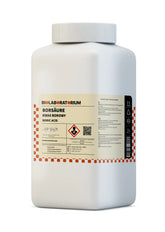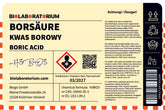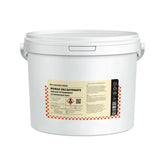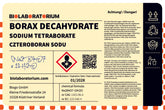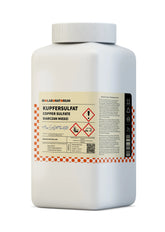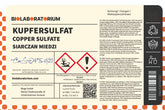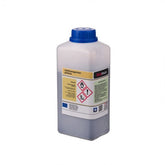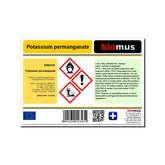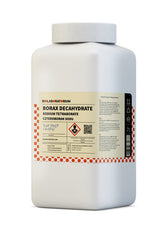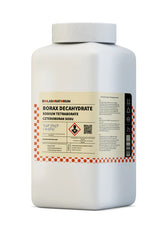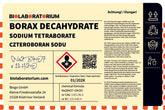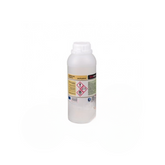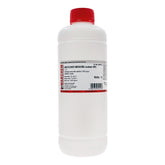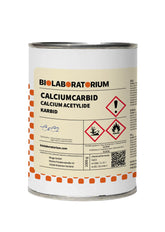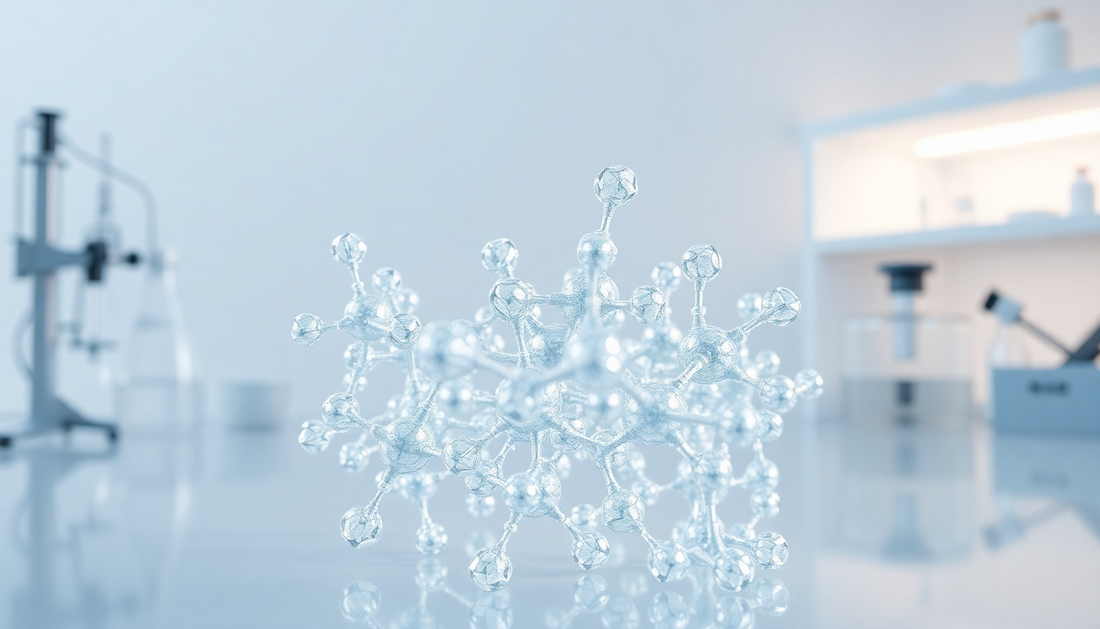Aluminium hydroxide – versatile helper in ceramic and pigment production
Aluminium hydroxide, also known as aluminium trihydroxide or Al(OH)3, is an important chemical raw material with numerous applications in various industries. In this blog post, we will take a closer look at the properties and uses of aluminium hydroxide, especially in ceramics and pigment production.
Properties of Aluminium Hydroxide
Aluminium hydroxide is a white, crystalline powder that occurs naturally as the mineral gibbsite. It is characterized by the following properties:
- High purity: Highly pure aluminium hydroxide has an aluminium content of over 65% and is free from impurities.
- Thermal stability: Aluminium hydroxide is thermally stable up to temperatures of about 300°C and only decomposes at higher temperatures.
- Chemical resistance: It is resistant to most acids and alkalis and therefore finds diverse applications in chemistry.
- Low solubility: Aluminium hydroxide is only very slightly soluble in water, which makes it interesting for many applications.
- High adsorption capacity: Due to its large surface area, aluminium hydroxide can be effectively used as an adsorbent.
These properties make aluminium hydroxide a versatile raw material in numerous industrial sectors.
Applications of Aluminium Hydroxide in Ceramics Production
In the ceramics industry, aluminium hydroxide is used in many ways. On the one hand, it serves as an important raw material for the production of earthenware, sanitary ceramics, refractory materials, and technical ceramics. On the other hand, it is also used as an additive to improve the properties of ceramic products.
Aluminium Hydroxide as a Raw Material in Ceramics Production
- Earthenware: Aluminium hydroxide is used as an additive to kaolin and other clays to increase the plasticity, shape stability, and firing strength of ceramic products.
- Sanitary ceramics: Here, aluminium hydroxide serves to improve the strength, surface quality, and coloration of sanitary ceramics such as toilets, sinks, or bathtubs.
- Refractory materials: Due to its high thermal stability, aluminium hydroxide is used in the production of refractory bricks, stones, and mortars for high-temperature applications.
- Technical ceramics: In the production of technical ceramics, such as those used in electronics, optics, or sensors, aluminium hydroxide contributes to improving mechanical, electrical, and thermal properties.
Aluminium Hydroxide as an Additive in Ceramics Production
- Pore former: Controlled decomposition of aluminium hydroxide at high temperatures can create fine pores in the ceramic structure, improving insulating properties.
- Flow aid: The addition of aluminium hydroxide increases the flowability of ceramic masses, facilitating shaping.
- Gloss enhancer: Aluminium hydroxide can be used as a gloss enhancer in glazed ceramic surfaces, giving them an attractive shine.
Aluminium Hydroxide in Pigment Production
Besides the ceramics industry, aluminium hydroxide is also widely used in pigment production. Here it serves both as a raw material and as an additive:
Aluminium Hydroxide as a Raw Material for Pigments
- White pigments: Pure aluminium hydroxide is used as a white pigment in paints, varnishes, plastics, and cosmetics.
- Refractory pigments: By calcining aluminium hydroxide at high temperatures, refractory aluminium oxide pigments are produced, which are used in heat-resistant coatings.
Aluminium Hydroxide as an Additive in Pigments
- Viscosity regulator: The addition of aluminium hydroxide increases the viscosity of pigment pastes and paint suspensions, improving processability.
- Matting agent: Aluminium hydroxide can be used as a matting agent in varnishes, paints, and plastics to achieve a silky matte-gloss effect.
- Opacifying agent: By incorporation into pigment systems, aluminium hydroxide can contribute to the opacity and cloudiness of coatings.
Conclusion
Aluminium hydroxide is a versatile and indispensable raw material in the ceramics and pigment industries. Its excellent properties such as thermal stability, chemical resistance, and adsorption capacity make it a valuable material for numerous applications. Whether as a main raw material or as an additive – aluminium hydroxide is indispensable in modern industrial production.

